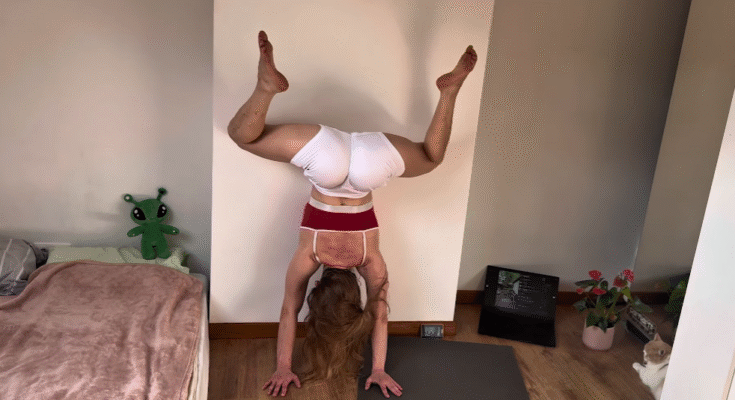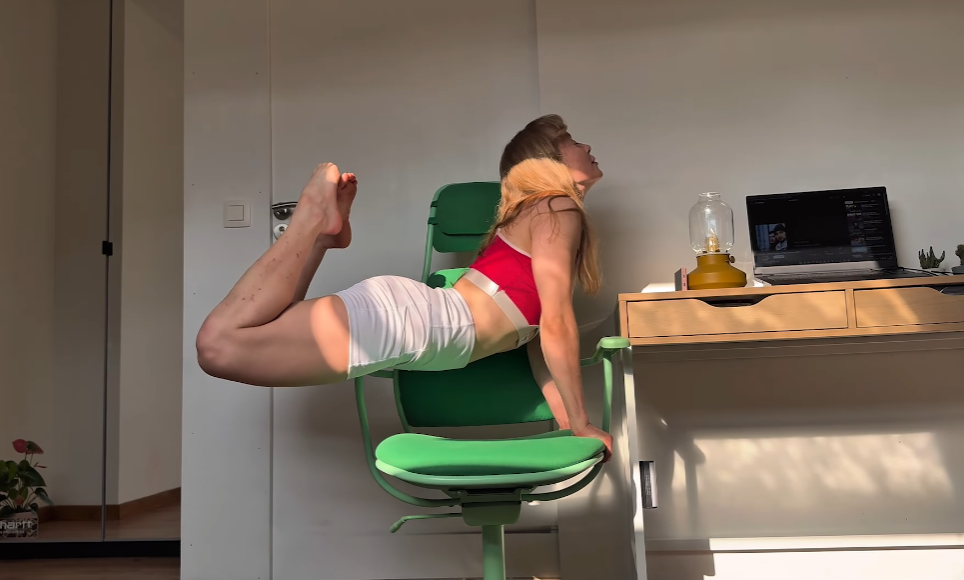
Gymnastics has always been admired as one of the most graceful and powerful sports in the world. When we think of gymnastics, images of dazzling flips, flawless handstands, and fluid movements across balance beams or mats often come to mind. Traditionally, gymnastics is practiced in a gym equipped with specialized apparatus and professional supervision. But in today’s fast-paced lifestyle, many people have discovered that gymnastics can also be enjoyed at home with creativity, consistency, and safety. “Gymnastics at Home” has become a growing trend, offering a convenient way for kids, teens, and even adults to explore flexibility, strength, and coordination without needing to commute to a gym every day.
Why Try Gymnastics at Home?
One of the biggest benefits of practicing gymnastics at home is accessibility. Not everyone has easy access to a professional gym or the budget for expensive classes. By creating a home practice routine, you save travel time and can train whenever your schedule allows.
Gymnastics at home also builds discipline. When you dedicate a corner of your living room, garage, or backyard to practice, you learn to stay committed even without coaches constantly pushing you. It fosters self-motivation and responsibility, qualities that carry over into other aspects of life.
Additionally, home gymnastics is fantastic for fitness. Even simple moves like forward rolls, cartwheels, or bridges build flexibility, balance, and muscle endurance. Over time, this improves posture, coordination, and even mental health as physical activity releases stress and boosts confidence.
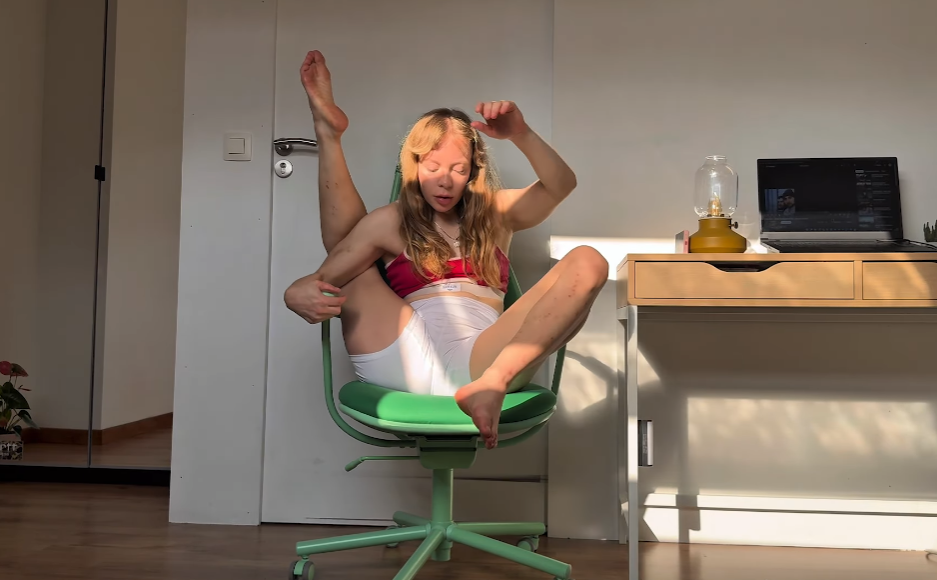
Setting Up a Safe Space
Safety is the number one priority in home gymnastics. Unlike a professional gym, your house isn’t padded with foam pits or spring floors. But with thoughtful preparation, you can make your practice safe and enjoyable.
- Choose a clear area: Select a flat surface free of furniture, sharp edges, or breakable objects. A living room with space or a garage with open flooring works well.
- Use mats: Investing in a foldable gymnastics mat or yoga mat is essential. These provide cushioning and reduce the risk of injury. If mats aren’t available, use thick carpets or layer blankets for softer landings.
- Good lighting and ventilation: Practicing in a bright and airy environment reduces fatigue and keeps you alert.
- Supervision for kids: If children are practicing, adult supervision is necessary to prevent unsafe stunts. Parents can act as spotters or simply ensure routines remain age-appropriate.
Basic Warm-Up and Stretching
Every gymnast, whether beginner or advanced, needs to warm up before starting. At home, a warm-up session can be simple yet effective.
- Jog in place – 2 minutes to increase heart rate.
- Arm circles and shoulder rolls – to loosen the upper body.
- Leg swings and lunges – to prepare the legs for flexibility.
- Neck rolls – gentle movements to avoid stiffness.
Stretching should follow to reduce the risk of strains. Focus on splits, hamstring stretches, bridges for the back, and shoulder flexibility. Practicing splits daily, even if you can’t achieve them at first, will gradually improve flexibility and mobility.
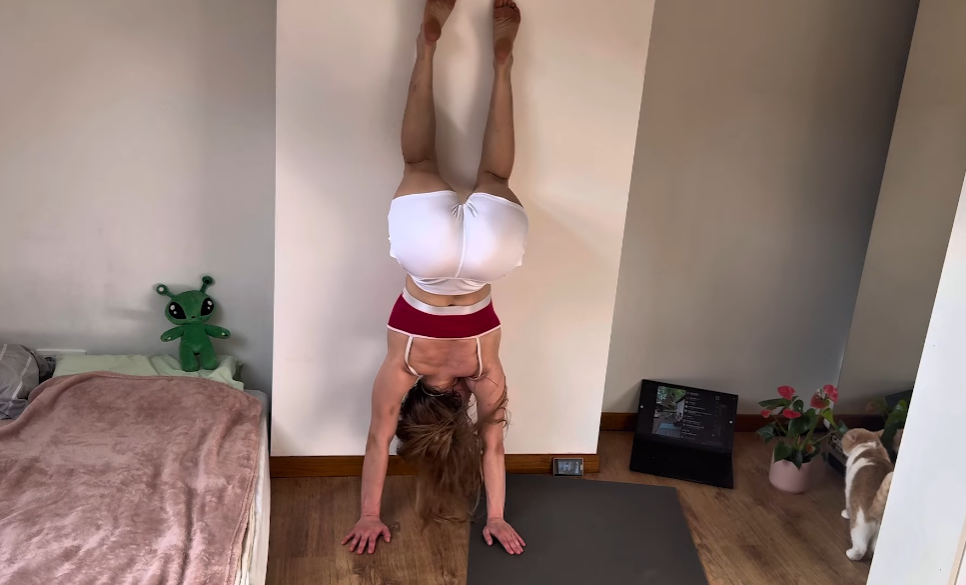
Beginner-Friendly Gymnastics Moves for Home
Not all gymnastics moves require professional equipment. Many beginner and intermediate skills can be safely practiced with mats, cushions, or open floor space.
- Forward Roll: A basic tumbling skill that builds confidence and body awareness. Start from a crouch, tuck the head, and roll forward smoothly.
- Cartwheel: A classic move kids love. Begin sideways, kick legs over while hands touch the ground one by one, and land on the opposite side.
- Handstand against a wall: This improves balance and arm strength. Use the wall for support until you gain confidence to balance freely.
- Bridge: Lying on your back, push up with arms and legs until your back arches. Great for flexibility and strengthening the spine.
- Backbend kickover (with support): For intermediate gymnasts, practicing kickovers from a bridge position develops strength and control.
Always practice these moves slowly, with good form, and stop if you feel pain.
Using Household Items as Equipment
Creativity is key to home gymnastics. You don’t need fancy beams or bars to practice; everyday items can serve as substitutes.
- Balance beam substitute: Use a low wooden plank, a yoga mat folded lengthwise, or even tape a straight line on the floor to practice walking, balancing, and pivoting.
- Bar substitute: While you shouldn’t attempt high bar routines at home, sturdy doorframes or pull-up bars can help with basic hangs and chin-ups to build strength.
- Soft surfaces: Couch cushions and pillows are great for practicing jumps, rolls, or safe landings.
These improvisations make practice more fun and resourceful while saving money.
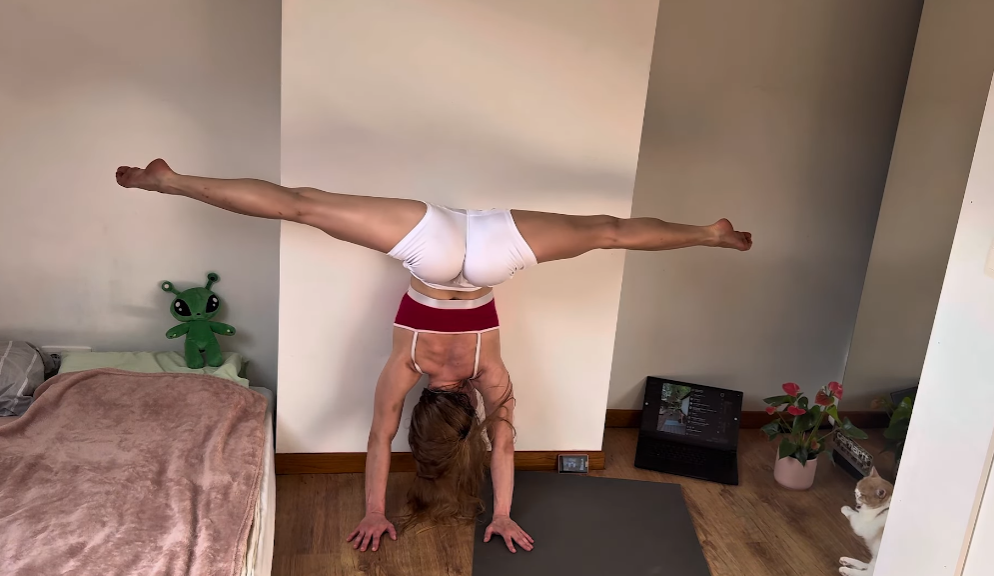
Building Strength for Gymnastics
Gymnastics isn’t only about flexibility; strength plays an equal role. Without equipment, bodyweight training is perfect at home.
- Push-ups – for arm and shoulder strength.
- Planks – for a solid core, crucial in holding handstands.
- Squats and lunges – for leg power and stability.
- Hollow holds and superman holds – to build body tension and control.
A strong body foundation makes skills easier to learn and prevents injury.
Mental Benefits of Gymnastics at Home
Gymnastics isn’t only physical; it’s also a mental exercise. Practicing at home teaches focus, patience, and problem-solving. Each skill takes time to master, and progress often comes in small steps. When a handstand that once felt impossible suddenly clicks, the sense of achievement is enormous.
Moreover, gymnastics improves confidence. Kids who practice at home develop a sense of pride in showing their new skills to friends and family. Adults benefit too, as learning new physical abilities reinforces self-esteem and relieves stress from daily routines.
Family Fun and Bonding
One wonderful aspect of gymnastics at home is how it can turn into family bonding time. Parents and children can stretch together, compete in balance challenges, or cheer each other on. Siblings can create mini routines, record fun performances, or even design backyard “gymnastics shows” for the family.
This shared activity not only promotes fitness but also strengthens emotional connections and creates lasting memories.
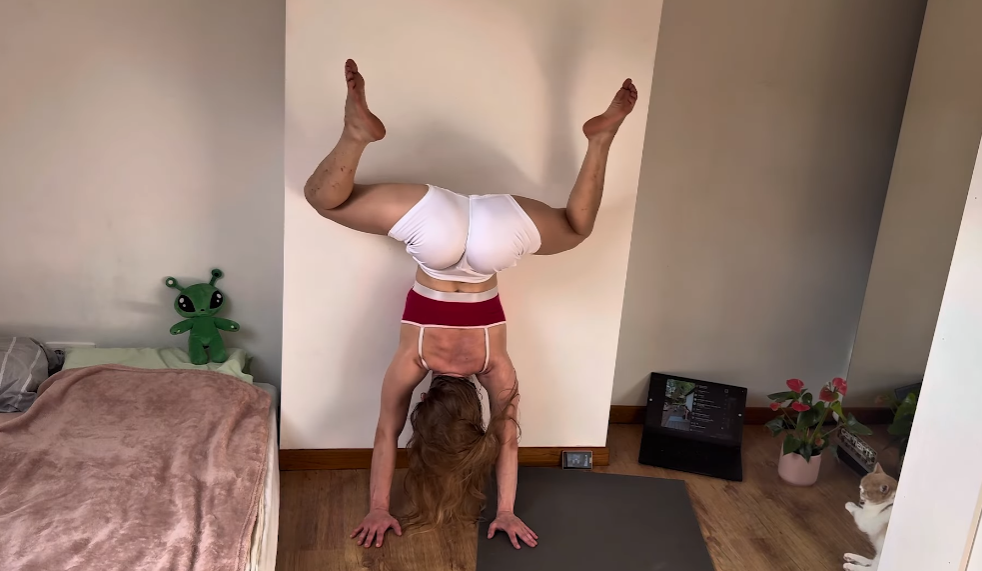
Safety Reminders
While gymnastics at home is rewarding, it comes with risks if not done carefully. Keep these tips in mind:
- Don’t attempt advanced stunts like backflips without proper mats and supervision.
- Stop immediately if you feel pain or dizziness.
- Wear comfortable clothing that allows free movement.
- Stay hydrated and take breaks when needed.
Safety first ensures that your journey remains fun and injury-free.
Conclusion: Bringing the Gym to Your Living Room
Gymnastics at home opens the door to creativity, fitness, and joy. Whether you’re a child rolling on the carpet, a teenager perfecting cartwheels, or an adult exploring flexibility and strength, practicing at home offers countless benefits. It encourages discipline, strengthens the body, and boosts confidence—all without leaving your front door.
You don’t need professional equipment or years of training to get started. With a safe space, basic mats, and consistent practice, anyone can enjoy the thrill of gymnastics at home. So clear some space, put on your comfortable clothes, and begin your journey today—the only limit is your imagination and determination.
